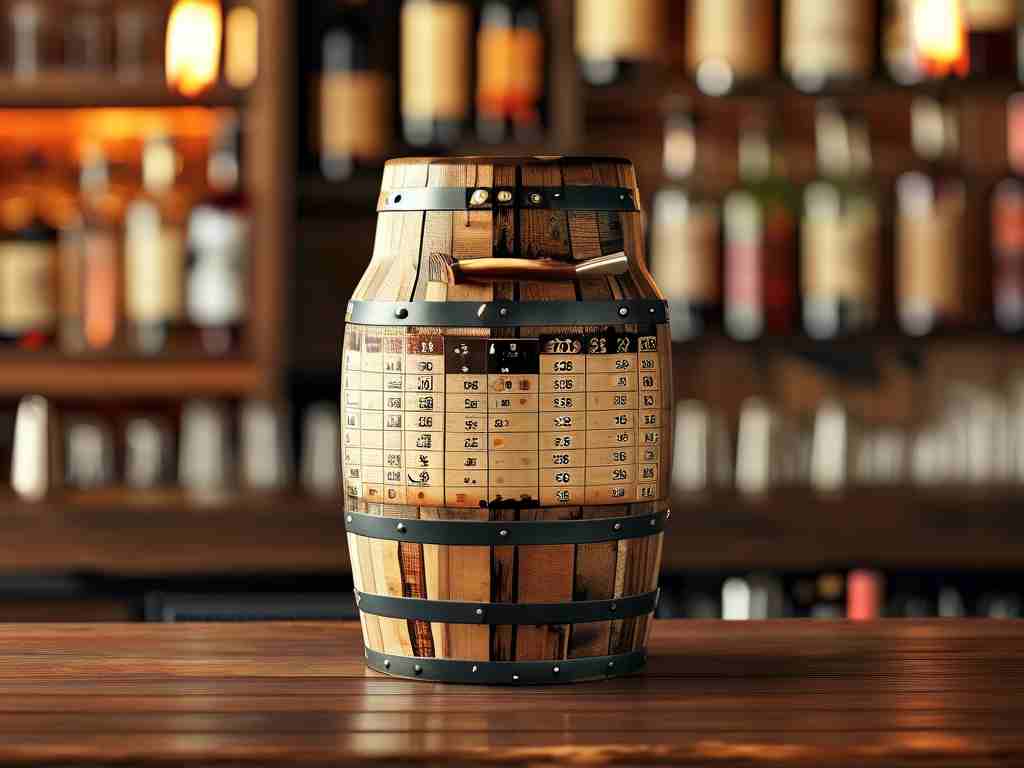In the wine production and storage industry, accurately determining the capacity of fermentation tanks or aging vessels is critical for inventory management, quality control, and operational efficiency. This article explores the mathematical formulas and reference charts used to calculate wine tank volumes, offering practical insights for winemakers and facility managers.

Understanding Tank Geometry
Most industrial wine tanks are cylindrical, either vertically or horizontally oriented. A smaller subset features conical bottoms for sediment collection. To compute their capacity, three geometric formulas are essential:
- Cylinder Volume: ( V = \pi r^2 h ) (where ( r ) is radius, ( h ) is height)
- Cone Volume: ( V = \frac{1}{3} \pi r^2 h )
- Spherical Cap Volume: ( V = \frac{\pi h^2 (3r - h)}{3} ) (for domed tank ends)
For horizontal cylindrical tanks, the calculation becomes more complex due to partial filling levels. The formula adjusts to:
[ V = L \left[ r^2 \cos^{-1}\left(\frac{r - h}{r}\right) - (r - h) \sqrt{2rh - h^2} \right] ]
where ( L ) is tank length, ( r ) is radius, and ( h ) is liquid height.
Standardized Reference Charts
To simplify day-to-day operations, many wineries use precalculated tank capacity tables. These charts correlate liquid depth (measured via dipsticks or sensors) with volume. For example:
| Depth (cm) | Volume (Liters) |
|---|---|
| 20 | 1,200 |
| 45 | 3,850 |
| 70 | 8,900 |
Such tables account for tank-specific dimensions and are often displayed near storage units for quick reference. Modern facilities integrate these values into IoT-enabled dashboards, enabling real-time monitoring.
Practical Considerations
- Temperature Compensation: Wine expands by approximately 0.5% per 10°C temperature increase. Advanced calculations include thermal adjustment factors.
- Sediment Allowance: Tanks with conical bottoms require subtracting 5–15% of total volume to account for lees accumulation.
- Safety Margins: Regulatory guidelines often mandate maintaining 10–20% headspace to prevent overpressurization during fermentation.
A case study from a Napa Valley vineyard highlights the impact of precise calculations. By implementing laser-scanned tank dimensions and automated volume tracking, the facility reduced measurement errors by 37% and improved batch consistency across vintages.
Software Integration
Leading winemaking software like Vintrace and AMS Titanium now embed these formulas into their inventory modules. Users input tank parameters once, and the system auto-generates capacity curves while syncing data with fermentation logs and bottling schedules.
Mastering wine tank capacity calculations blends theoretical geometry with practical adaptations. Whether relying on classic formulas, reference charts, or digital tools, accuracy in this foundational process supports everything from recipe scaling to regulatory compliance. As one industry veteran remarked, “In winemaking, math is as vital as the grapes themselves.” Future advancements may incorporate AI-driven predictive models, but the core principles explored here will remain indispensable.


